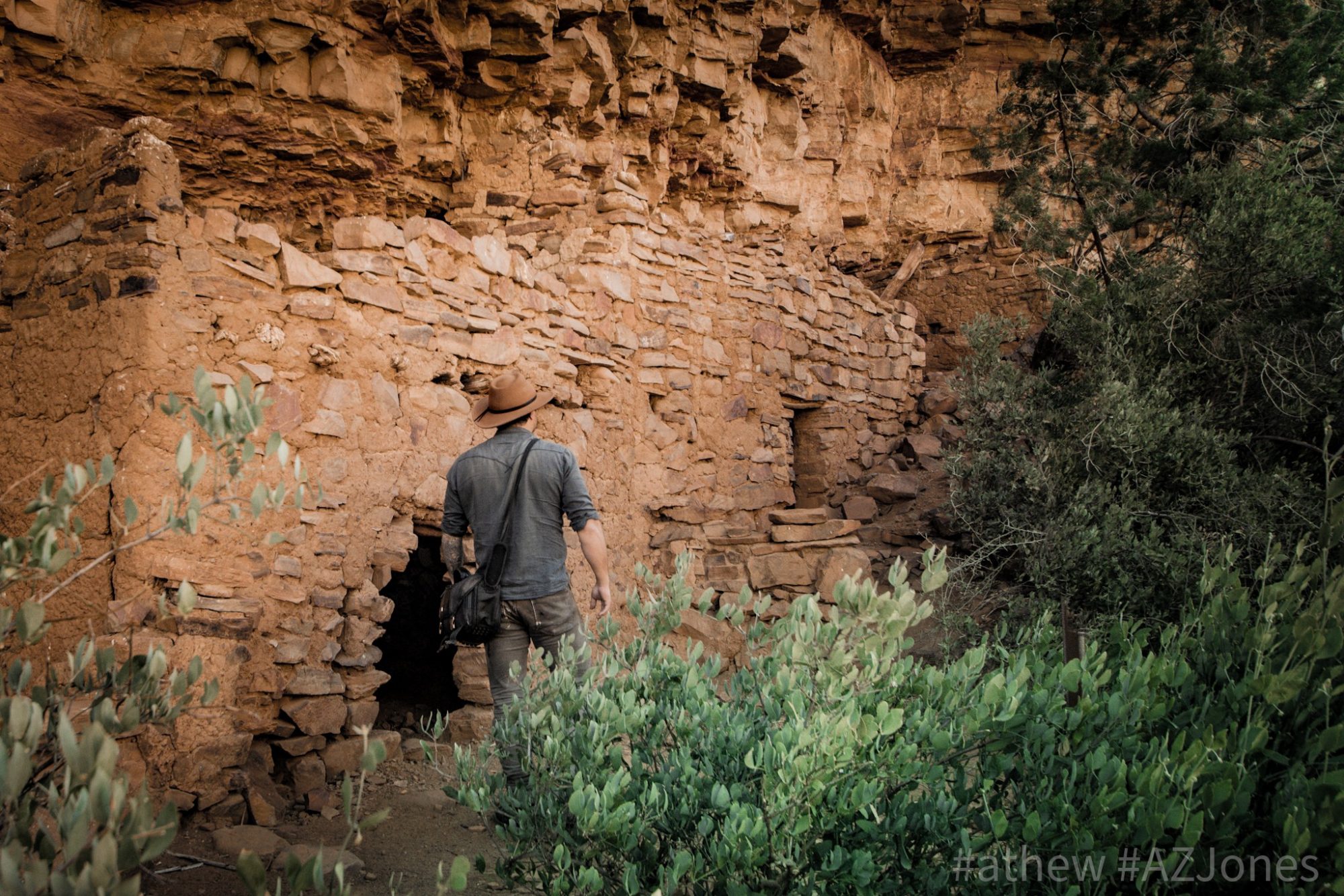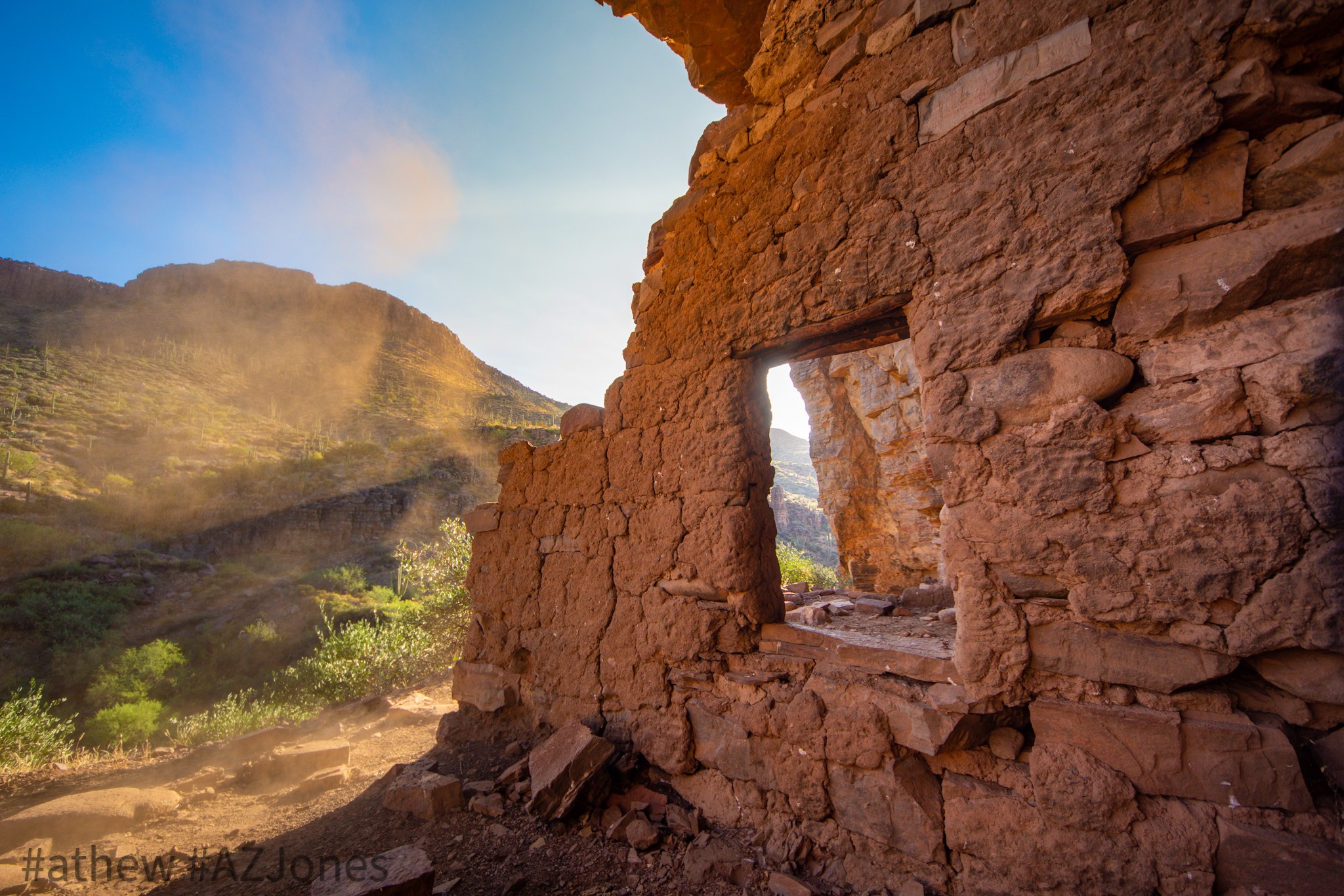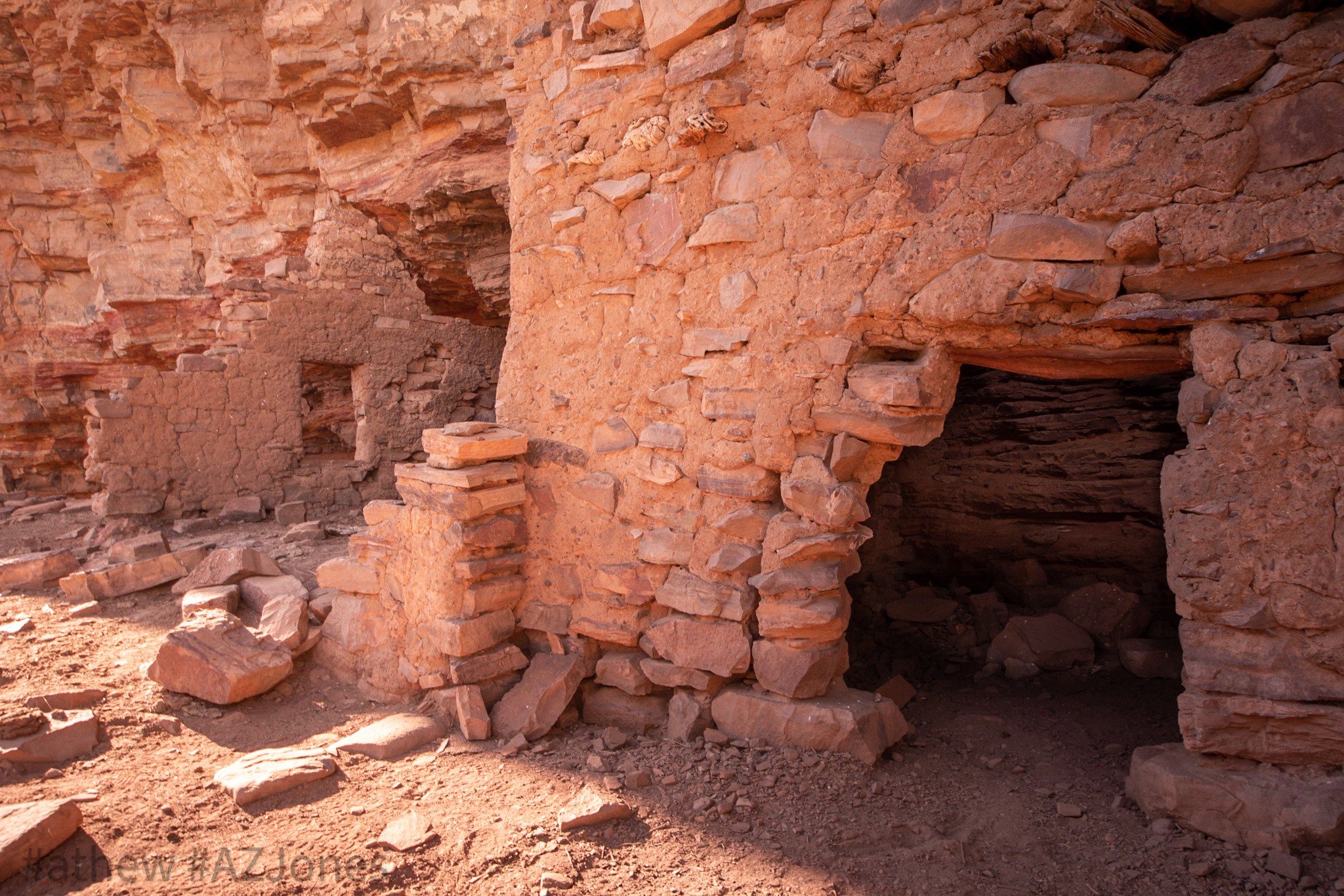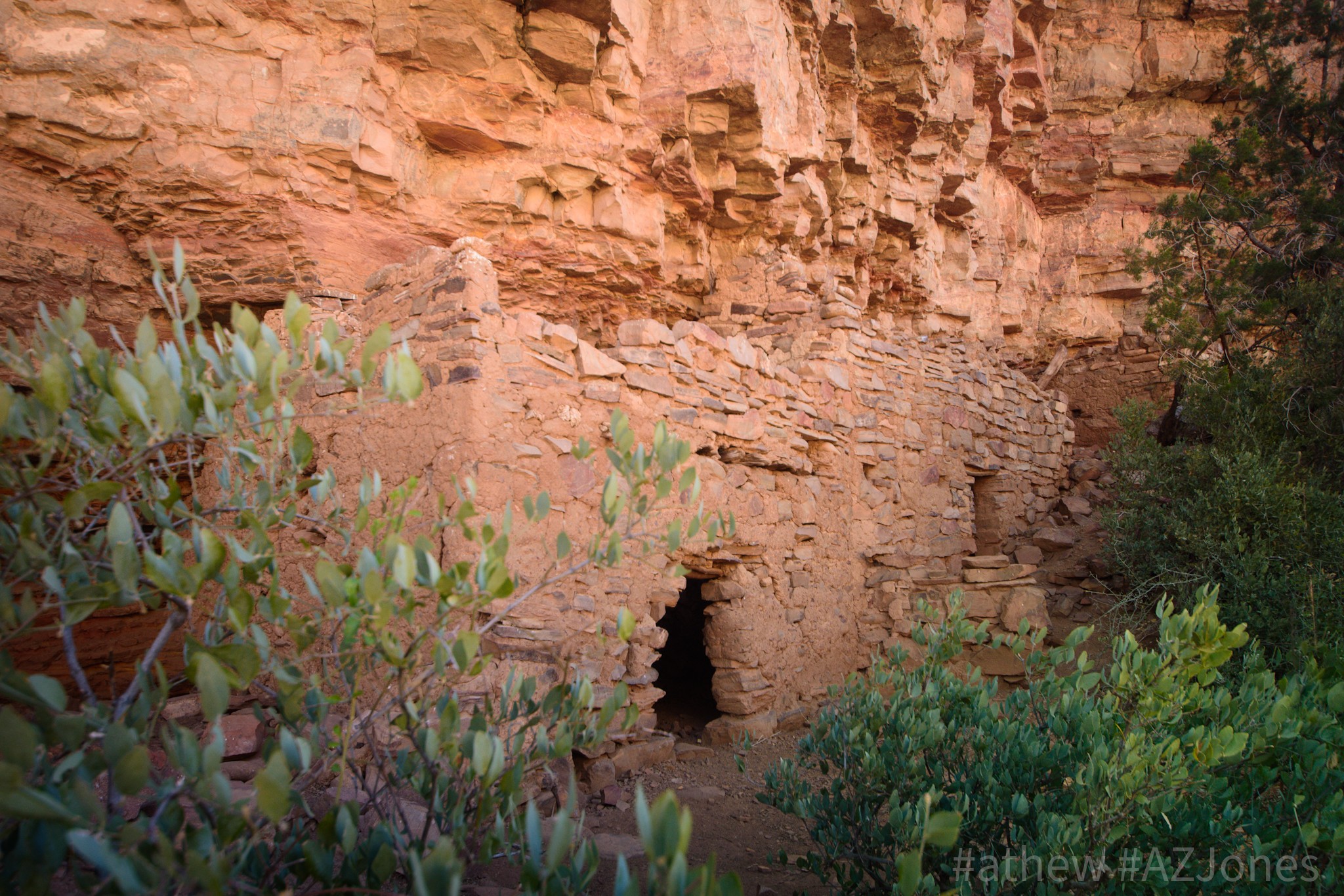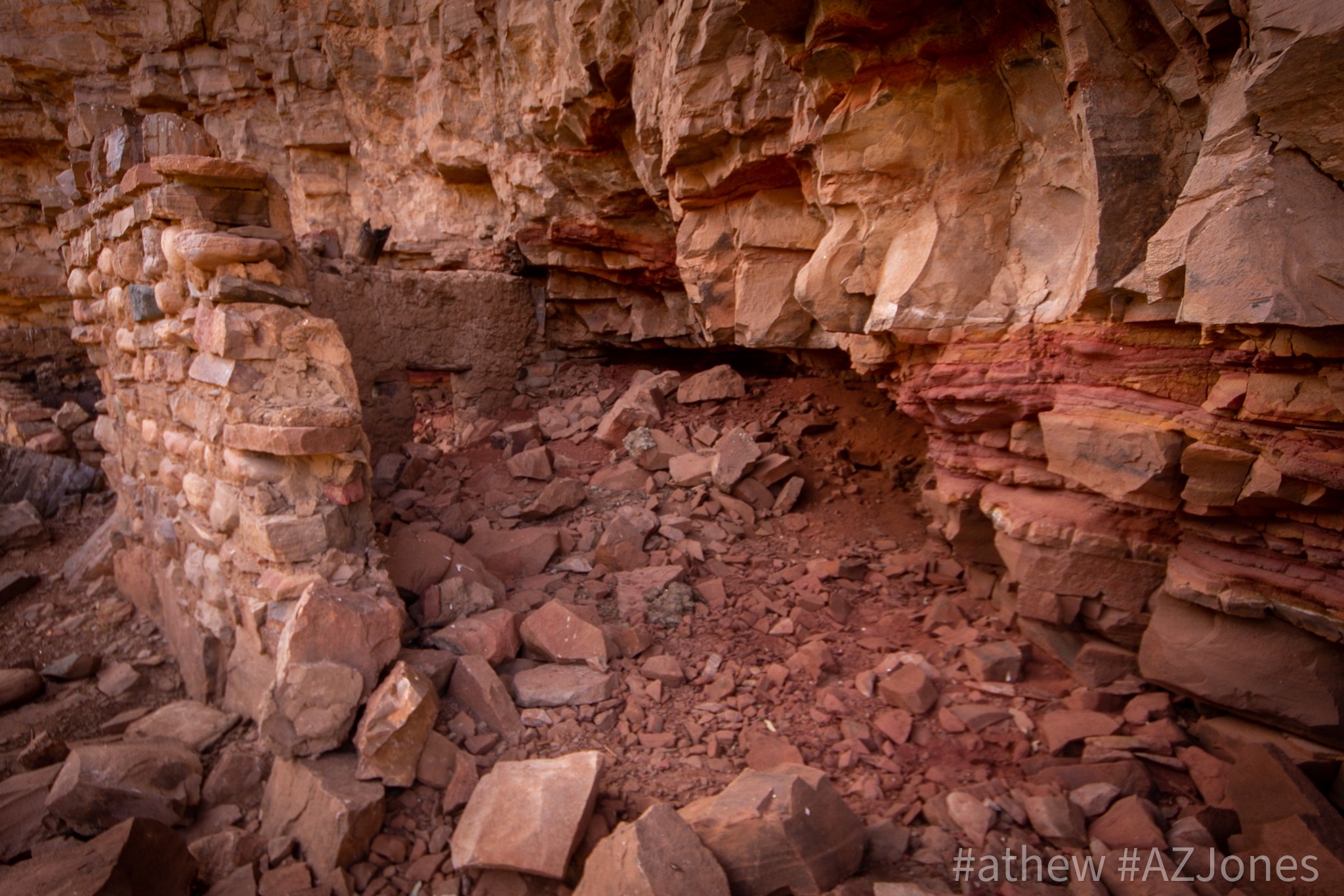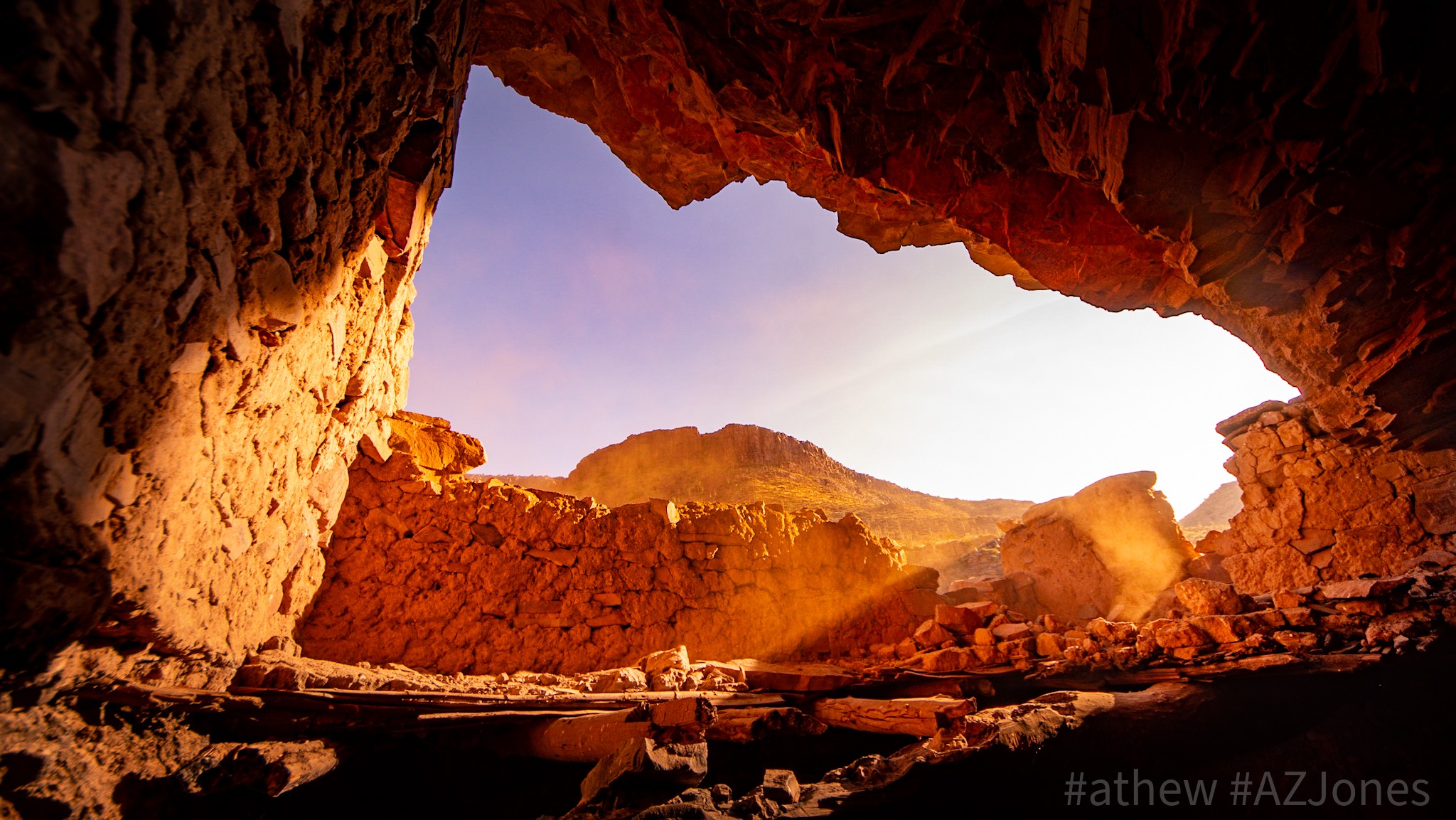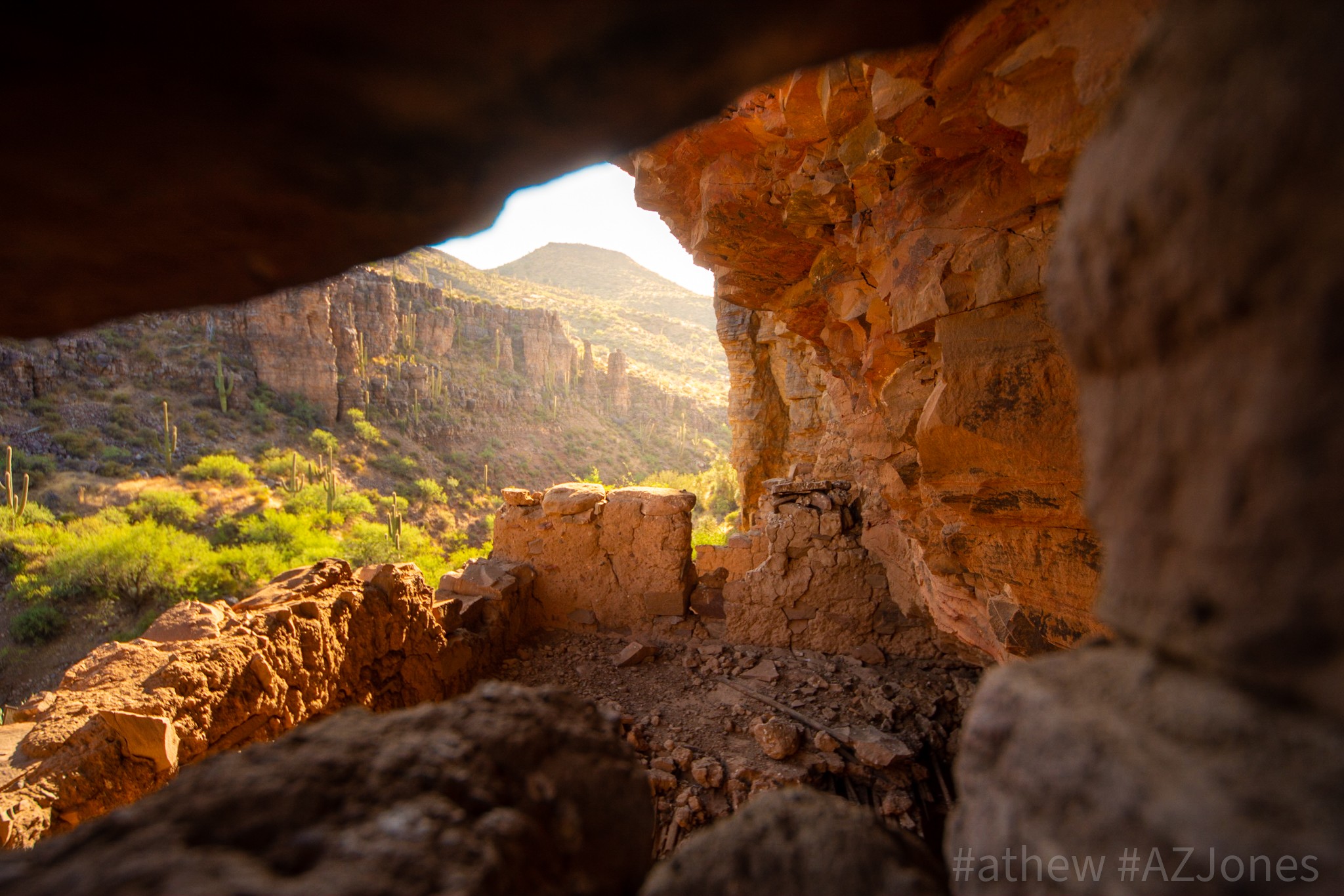These ancient dwellings are built into a small alcove overlooking a creek in the Sierra Ancha Wilderness. Their likely construction, sometime between 1280 and 1350 A.D., was determined, in part, by the tree rings found in the beams along the roof.
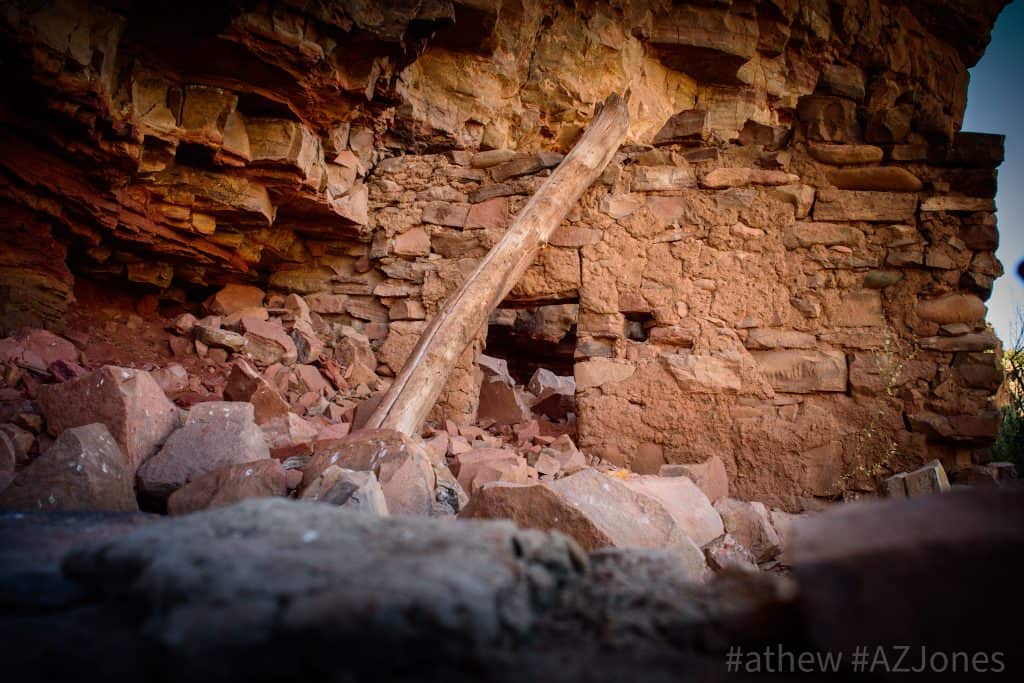
I have visited a number of ruins in the Sierra Ancha Wilderness, much of whom belonged to the Anchas, a group with ties to the Mogollon culture. However, these dwellings are believed to have been created by the Salado, a group closely associated with the Tonto Basin.
Today, the dwellings are segmented into four parts (seen below): a first wall, a second wall, the main structure, and a fourth smaller, secondary structure. As with most ancient sites, it’s a far cry from what it used to be. While much remains, waist-high walls, with an opposing length of only a few feet, along the main structure, suggest a number of missing rooms—this is without mentioning the large gaps between segments.
The main structure has three rooms: The first (lower room) and second room share the same vertical space, with hardly anything remaining of the second story, and the third room is at the level of the second story, as the site is on a slope. No roof remains, and there is hardly anything left of the floor that separates the top from the bottom. Wood beams that once ran the length of the main and secondary structures, now hang from the wall to the floor. The lower room is the best preserved. Rafters, although weathered, protrude from the walls.
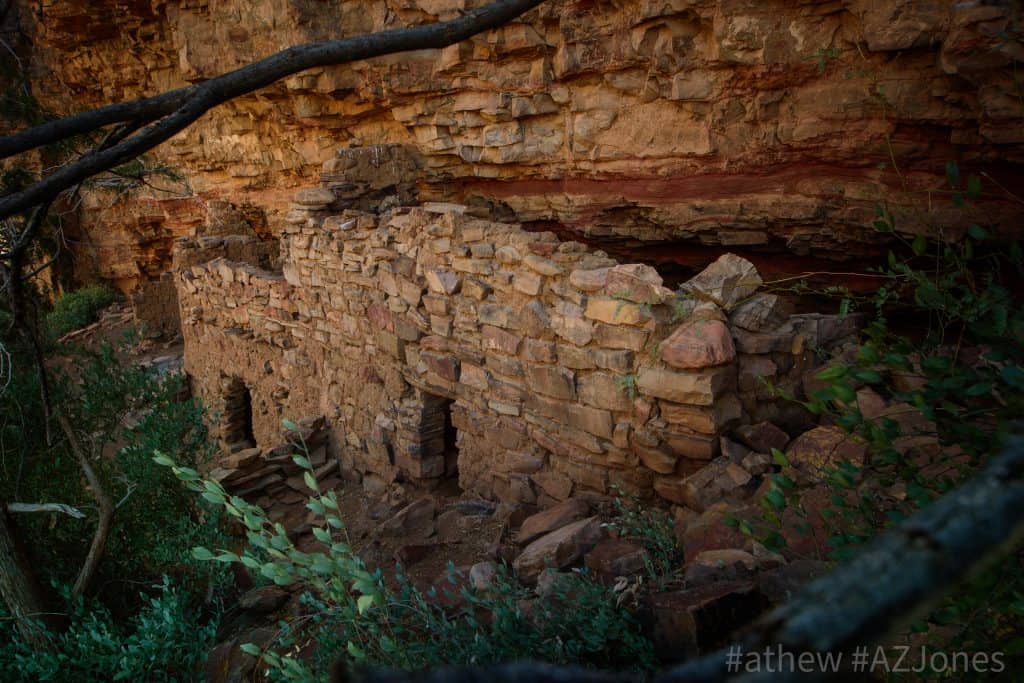
Below is a look into the third room of the Main Structure:




Here’s a look inside the first set of rooms:
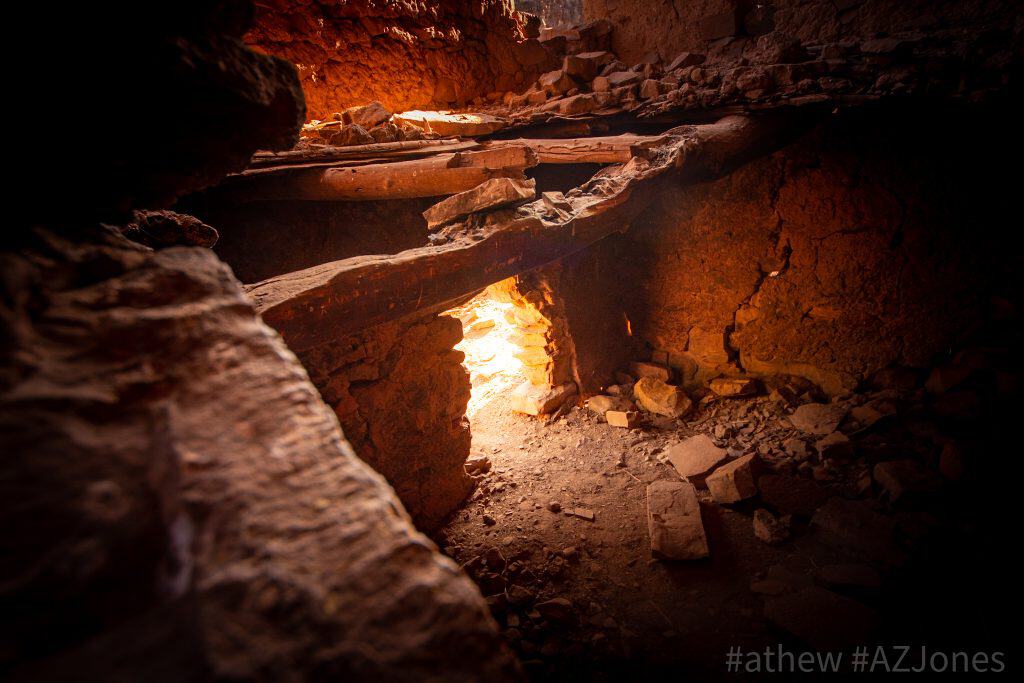
With a close eye, you can see clear finger impressions preserved in the ancient mud plaster. Some of these markings are so impressive, you can see whether their fingers were slid or pressed.





Rich in the iron-oxide mineral known as hematite, much of the rock lining the back walls of this overhang are covered in hues of red and yellow. Hematite was used by the natives in their tools, weapons, ornaments, and more.
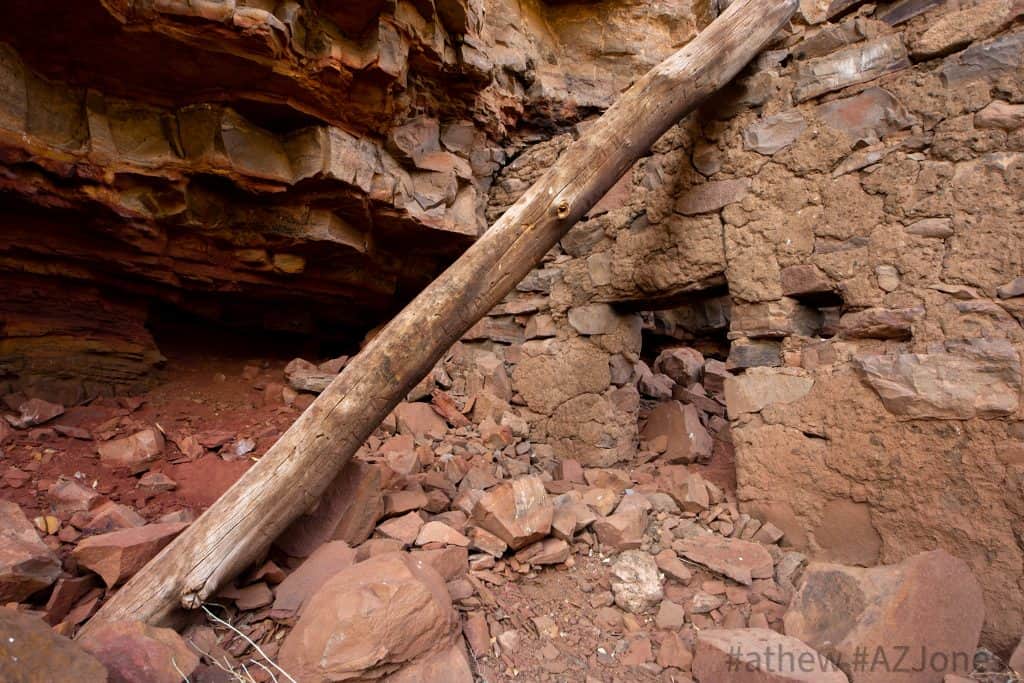
The creek these ruins were built along connects to the Salt River. The river provided them a living with irrigation and fertile ground for farming, as well as a trade route with neighboring tribes.
Although the exact reason for its abandonment is unknown, It is believed that much of the population moved on after it became an unsustainable size.
I hope you enjoyed that read! To stay up-to-date on all things Arizona Jones, be sure to subscribe to my weekly newsletter! And, if you like my work, please support me, by visiting my online store, and sharing my articles on your preferred social media!

